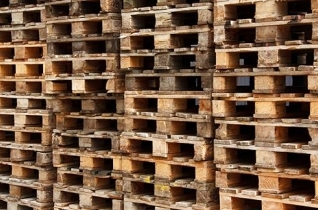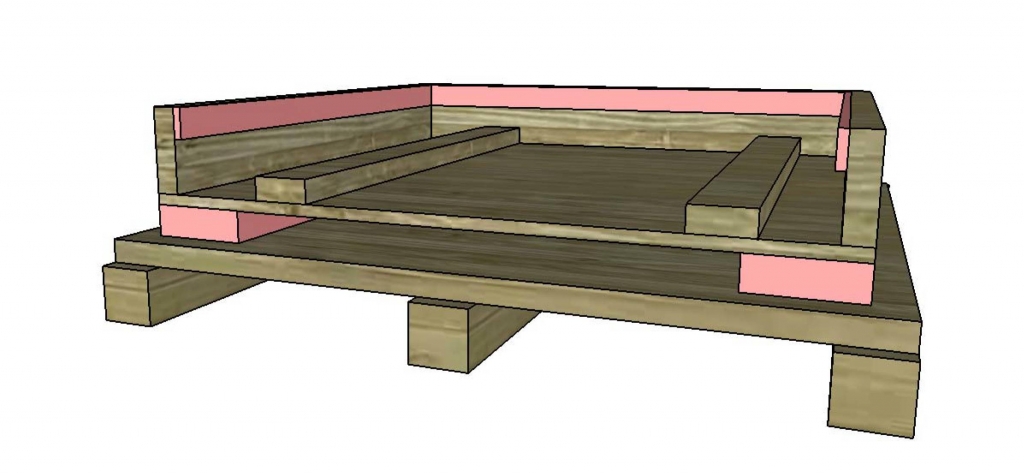How is a shipping crate similar to both your home and your most intimate relationship? Each one is only as strong as the foundation upon which it is built.
Just like you wouldn’t expect a partnership to thrive without shared values and mutual trust, you can’t expect a crate built on a sub-standard base to survive the ups and downs of international travel.
So it pays to consider what’s underneath the crating the next time you’re planning a shipment. Every home inspection includes a thorough review of the foundation. Every shipping crate deserves the same treatment.
Know Your Vocabulary: Pallet vs. Skid
The first step in ensuring that your shipment has a strong foundation is educating yourself about the various bases that can be used to move products around the globe. Some products are moved on skids , but the vast majority of products are moved and stored on pallets.
Although the words “skid” and “pallet” are used interchangeably by many, they are actually quite different. Wooden pallets and skids are two different styles of shipping platforms. What they have in common is that they are both constructed around a set of “runners,” lengths of lumber running parallel to one another.
Wooden pallets have a series of slats nailed or stapled to the runners crosswise. Skids, by contrast, have a “deck” nailed to the runners. A deck board is a solid piece of plywood or lumber. Some skids also have a second “bottom board” nailed to the bottom of the runners, which adds further stability to the skid.
Basically, a pallet’s structure is more like Swiss cheese (viewed from above, there are holes). A skid’s structure is a thick slice of cheddar.
Pallets provide an incredibly versatile, relatively low-cost, portable platform onto which products can be stacked. Most often the entire pallet, stacked high with consumer goods, is shrink-wrapped in plastic to prevent the products from shifting during transit. (But don’t be fooled into thinking the plastic wrap will prevent damage from moisture. Its chief purpose is restraining the load; rain water and condensation are still serious concerns.)
The shape of the pallet is likely very familiar to you, whether you’ve shopped for a year’s worth of paper towels at a warehouse club stacked floor to ceiling with pallets being used as storage, or browsed online to find clever ways to re-use the ubiquitous platforms as DIY home furnishings of decoration.
But the very same slatted design that makes pallets easy to disassemble for craft projects, compromises its sturdiness for transport. The solid deck of the skid, on the other hand, helps lock in its shape. The right-angled corners of a skid remain at 90 degrees, even when the platform is torqued during shipping.
Furthermore, the skid’s consistently flat top surface offers the option of adding bracing, cushioning, or other extras to further benefit your product.
Choosing the Right Foundation for Your Shipment
Products Which Are Usually Shipped on A Pallet
Some products, like large amounts of lightweight, inexpensive consumer goods, can travel safely by pallet. If everything goes according to plan, the pallet of shrink-wrapped goods will be transferred without incident from factory to loading dock, from loading dock to truck, from truck to distribution center, from distribution center to larger truck, from larger truck to shipping container, all the way through to its final destination.
Even in a worst-case scenario, such as an accidental puncture by a forklift or a soaking from a rainstorm while waiting on an airport runway, the cost to replace an entire pallet full of the product is relatively low. So the low cost of a pallet is likely to be worth the risk.
Products Which Should Be Shipped on A Skid or In a Wood Crate
Other products should not be shipped on a pallet. If your product checks any of these boxes, you should include a skid in your budget:
- Heavy and/or large items, such as heavy machinery
- Irregularly-shaped items
- Anything which is expensive to manufacture
- Anything which is sensitive to shock or vibration
Choosing to ship your product on a skid rather than a pallet is choosing between paper and plastic plates at a barbecue. The crosshatch design of slats on the top and bottom of the pallet simply isn’t as sturdy as the solid top (and sometimes bottom) boards of a skid.
Plus, if you plan to add in cushioning or bracing, you will need a solid base on which to attach the extra protection. A pallet won’t provide the foundation onto which you can attach the wooden crate sides and roof to protect your shipment from the weather and rough handling.
CDC Packaging Builds Better Crates from the Ground Up with Heavy Duty Skids
Pallets are inexpensive and ubiquitous, but they might not be right for your product. If you have done the “cost vs. loss” analysis and decided that your shipment deserves a skid instead, you can trust CDC to build you the right foundation. Contact us today to learn more about our custom-made heavy-duty skids.


